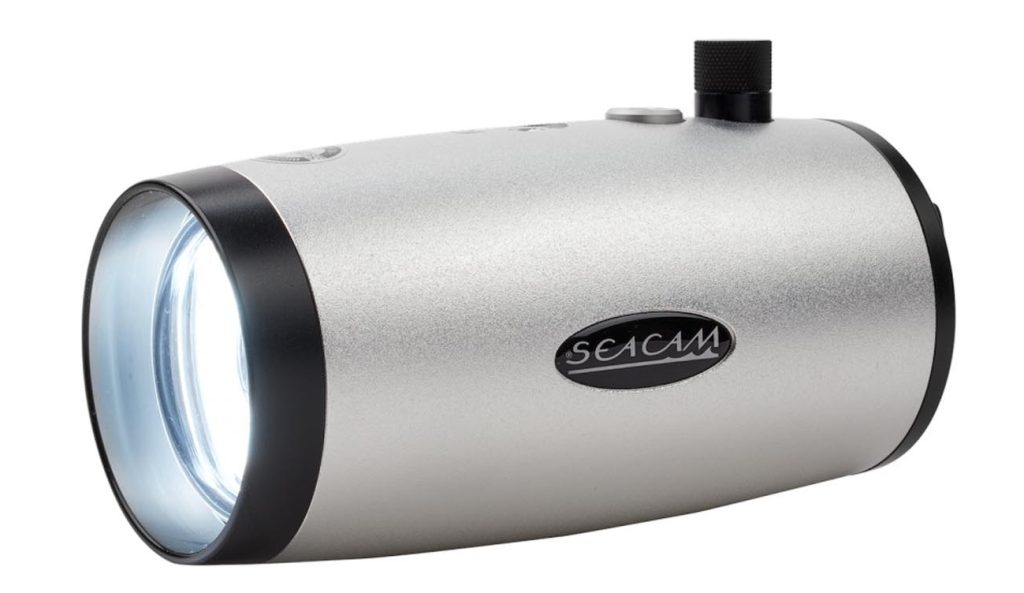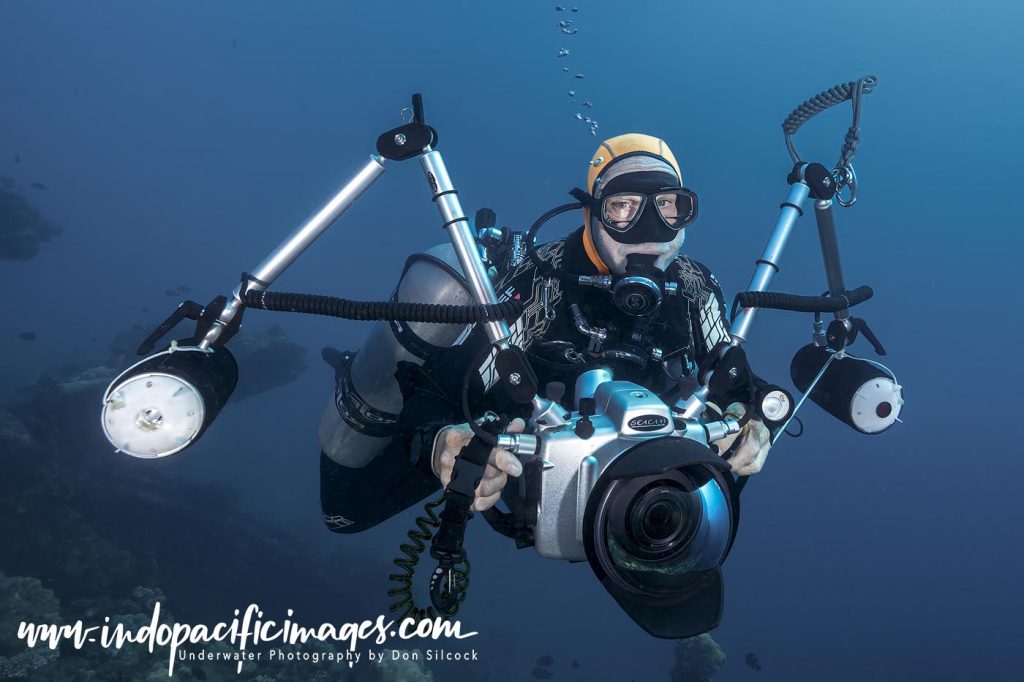The $2000 Tripod Lesson
There’s an old joke in the landscape photography community: How do you end up with a $2000 tripod?
You start with a $200 one. Upgrade to a $300 model when the first drives you crazy. Buy a $500 version thinking you’ve finally nailed it. Then, eventually, you fork out $1000 for the carbon-fiber tripod you initially dismissed as “too expensive.”
Only to realize that if you’d bought it first, you’d have saved yourself $1000.
For me, underwater strobes have followed a similar path. I’ve owned and used models from Japanese, American, and European manufacturers. Each seemed like “the one” until I discovered something better. Now, after a year of use, my SEACAM 160D strobes have become the equivalent of that $1000 tripod: the gear I should have invested in from the beginning.

What Makes a Great Underwater Strobe?
Over the years, I’ve learned that specs on a datasheet don’t always tell the full story. Guide numbers, beam angles, and recycle times often look impressive on paper but can be misleading in practice. What truly matters comes down to three things:
Quality of Light: Even coverage, smooth fall-off, and pleasing color temperature.
Quantity of Light: Enough power to illuminate big scenes without harsh hot spots.
Reliability: Strobes must fire every time, especially when fleeting wildlife moments happen.
Key Factors That Define Strobe Performance
Guide Number (GN): A strobe’s GN is supposed to indicate power. But with no standard across manufacturers, many quoted figures are optimistic. Real-world use is far more telling.
Angle of Coverage: For wide-angle scenes, you need at least 130° so two strobes overlap without leaving dark zones. Anything less makes even lighting difficult.
Intensity and Fall-Off: The best strobes avoid bright central hot spots and instead deliver smooth, even light across the frame. This reduces post-processing headaches and produces natural-looking images.
Color Temperature: In blue tropical waters, warmer strobes (~4500–4600K) enhance backgrounds and improve overall color balance. Cooler strobes can leave images flat or unnatural.
Recycle Time: Fast recycle is critical for fast-moving subjects like sharks or schooling fish. In practice, you need strobes that can keep up with your camera’s frame rate at partial power.
High-Speed Sync (HSS): Still somewhat rare in underwater strobes, HSS allows shooting beyond the typical 1/250s sync limit. This opens creative possibilities in bright conditions.
TTL Metering: Long dismissed for wide-angle underwater work, TTL on the SEACAM 160D has proven surprisingly accurate and useful, especially for dynamic subjects.
Reliability: Above all else, reliability matters. Strobes are notorious for corrosion, battery flooding, and electrical failures. A strobe that doesn’t fire when needed is worse than useless.
SEACAM 160D Strobe Review – One Year in the Water
In February 2024, I became formally associated with Austrian manufacturer SEACAM. My kit included a pair of SEACAM 160D strobes, which I first used while diving reefs and wrecks in the Solomon Islands.
Over the past year, I’ve tested them in a wide variety of environments: Bikini Atoll (deep wrecks), Fakarava (sharks and reefs), Raja Ampat (coral reefs), Dominica (sperm whales), Anilao (blackwater), Halmahera (coral reefs), Lembeh (critters), Sulawesi (coral reefs) and , La Ventana (big animals).

SEACAM 160D Strobe Review – Performance in the Water
Reliability: 100% flawless across 12 months. Robust S6 bulkheads, dual O-rings, and solid internal design make them bulletproof.
Power: Rated at 160 Ws, and confirmed by Backscatter as the most powerful strobe they’ve tested (“Best Big Bang Strobe”).
Beam Coverage: 130° illumination with excellent intensity and no harsh fall-off. Smooth overlap between two strobes.
Color: At 4500K, they deliver the warmest light of any premium strobe. Foregrounds and backgrounds look vibrant and natural.
Recycle Time: 0.1–2.7 seconds depending on power. At ¼ power, the strobes kept pace with my Nikon Z8 at 10 FPS—matching my old Sea&Sea YS-250s.
High Speed Sync: Worked out-of-the-box with my SEACAM housing and Nikon Z8. No special firmware or mods required.
TTL Metering: To my surprise, underwater TTL exposure was consistently excellent. I now use it frequently for wide-angle shooting.
SEACAM 160D vs Other Strobes
While there are other excellent strobes currently on the market—such as the Retra Pro X, Inon Z-330, and Sea&Sea YS-D3—none combine the same mix of power, warm light, beam coverage, HSS, TTL, and reliability.
Cheaper alternatives (like the Chinese facsimiles) often boast unrealistic specs. On paper, they may look competitive. In practice, they rarely deliver.
SEACAM 160D Strobe Review – Pros and Cons of the 160D
Pros:
Exceptional power output
Wide, even beam coverage
Warm 4500K color temperature
Reliable HSS and TTL performance
Rock-solid build and reliability
Cons:
Expensive (premium product for serious shooters)
Larger and heavier than some compact strobes
Final Thoughts – Is the SEACAM 160D Worth It?
After a year of diving with them around the world, my conclusion is simple: the SEACAM 160D strobes are the best underwater strobes I’ve ever used.
Yes, they are expensive. But like that $1000 tripod, they may be the last ones you’ll ever need. If you value image quality, creative flexibility, and reliability above all else, the SEACAM 160D is worth every cent.
